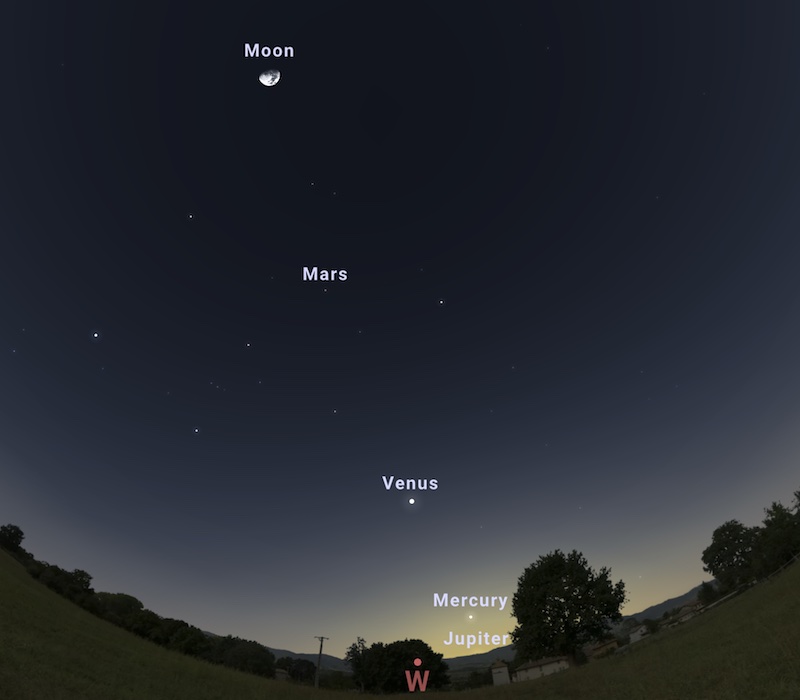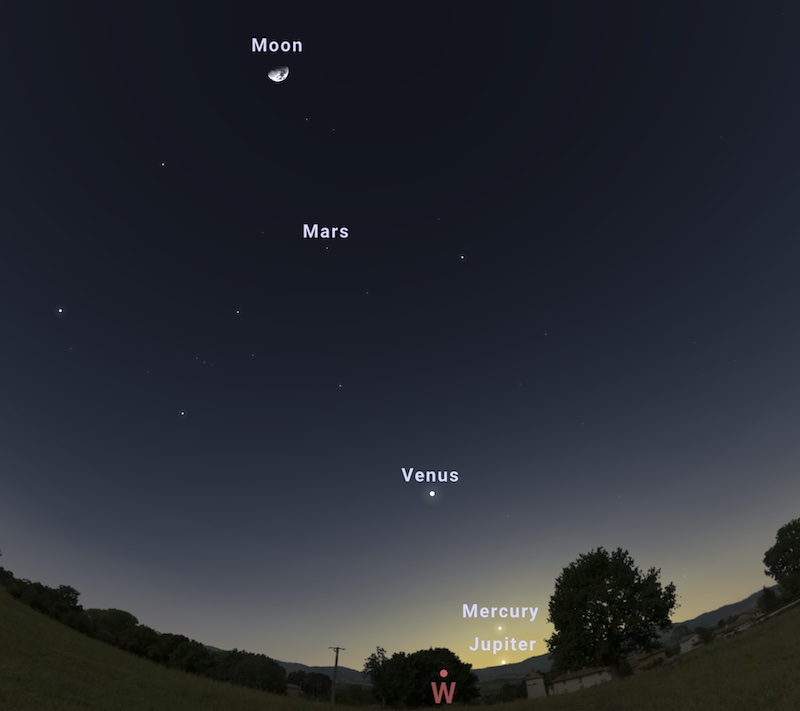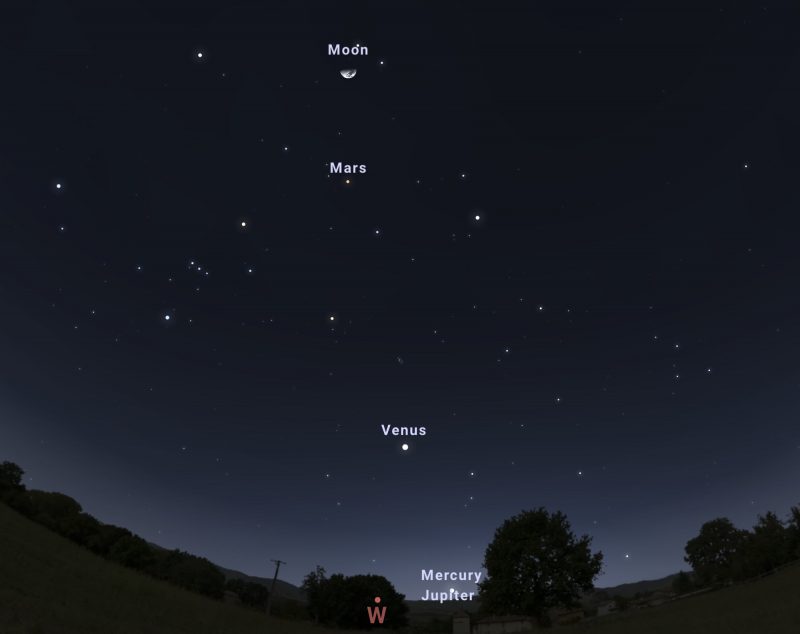
How to see the 5 planets
This week (late March 2023), you can see five planets – Venus and Uranus, Jupiter and Mercury, and Mars – lined up across our evening sky. Gianluca Masi of the Virtual Telescope Project in Rome, Italy, showed them via telescope on March 29. To enjoy his presentation, check out the video below. And in addition, you can see them in the sky, maybe, if your sky conditions are exceedingly good, and if you have a sharp eye.
The planets are located along a gentle arc across the evening sky, soon after the sun goes down, following the ecliptic, or path of the sun across our sky. Likewise, the moon and planets also follow the ecliptic.
How can you see the planets? Go out around sunset and look west. You’ll easily see the brightest planet of them all, Venus.
Then use binoculars to scan next to Venus for the planet Uranus.
Then aim your binoculars lower in the sky, closer to the sunset point. That’s where you’ll find Jupiter and Mercury.
Then look higher in the sky – still looking along the ecliptic, or sun’s path – for Mars.
Virtual Telescope presented a viewing of all 5 planets after sunset, on March 28, 2023.
Last chance to get a moon phase calendar! Only a few left. On sale now.
Guide to seeing the planets
Venus and Uranus. Of these five planets, Venus is brightest and Uranus is faintest. These two are close together in the sky. Venus is easily visible to the eye. It’ll be the first “star” (really, planet) to pop into view. Uranus is shining at +5.8 magnitude. That’s theoretically visible to the eye. But, in practice, you’ll want a dark sky and binoculars to find it. It’s roughly 1.5 degrees, or three moon-widths, from Venus early this week. Uranus was closest to Venus on Thursday, March 30.
Jupiter and Mercury. Jupiter is the 2nd-brightest planet. But it’s near the sunset now and visible only in bright twilight. The bright twilight sky is making Jupiter harder to find than it would be otherwise. But Jupiter is still possible to see with the eye, very near the sunset. And Mercury? It’s fainter than Jupiter (though still brighter than most stars). But it’s also near the sunset. Start looking for the pair low on the western horizon, shortly after the sun goes down. You’ll need a clear sky and an unobstructed western view to catch them. Binoculars should help. They’ll set only about 30 minutes after sunset. So, when the sun sets, the clock is ticking.
Mars. It was easy to find early this week, because then it was not far from the moon on our sky’s dome. It was the bright red light close to the moon on Tuesday evening, March 28, 2023. Mars is bright. It’s brighter than most stars. And it’s clearly red in color. Even after the sun moves away, you might be able to find Mars by its color, and by the fact that it isn’t twinkling as stars do.
Some finder charts




Visit stellarium.org for precise views from your location.
Bottom line: You have the chance to see five planets tonight and for the rest of this week. Charts and info here including where to watch it on video.
For more sky events, visit EarthSky’s night sky guide.











